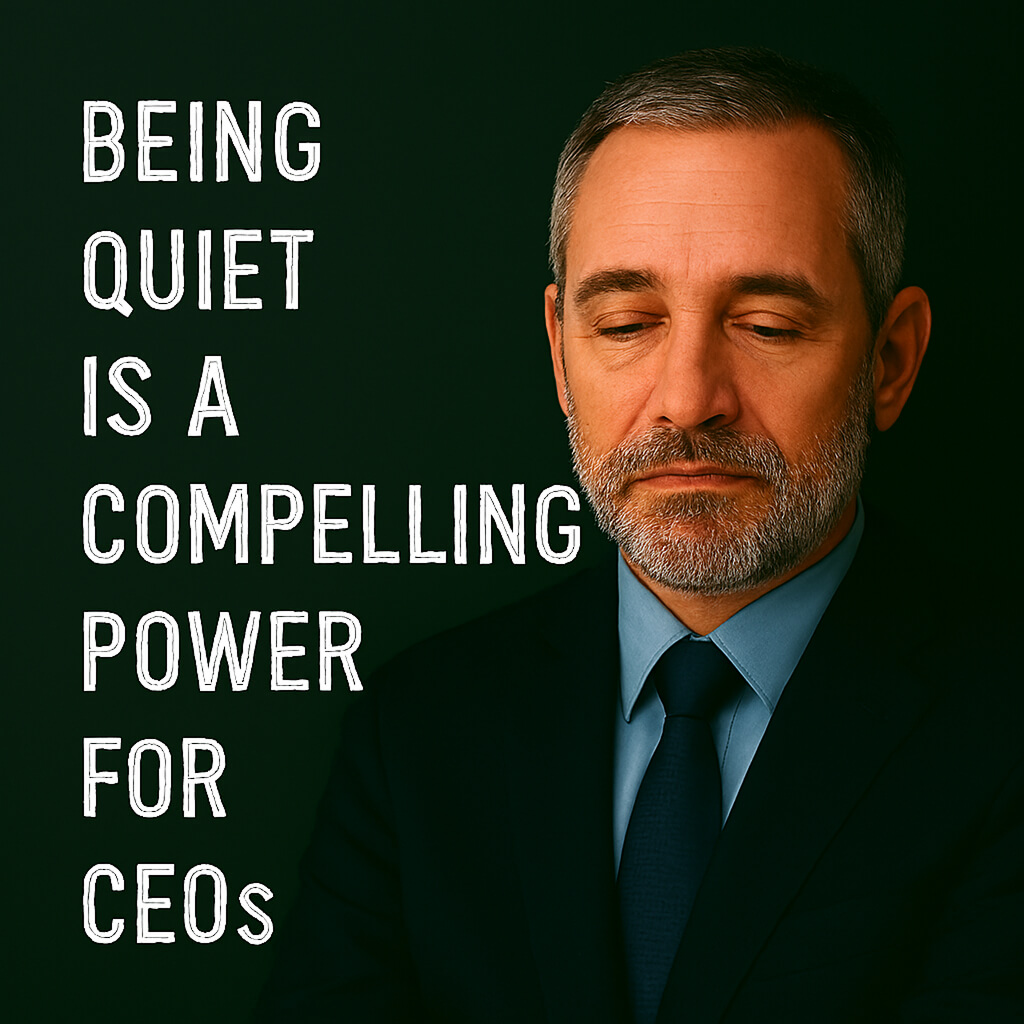CEOs are often expected to be vocal, visible leaders, constantly communicating and networking. Yet, the most effective CEOs I’ve coached embrace the power of quiet leadership. By prioritizing solitude, active listening, and strategic restraint, they gain clarity, build trust, and make impactful decisions. This article explores six ways quiet leadership transforms CEOs into visionary stewards, with practical strategies and real-world examples to guide new and aspiring leaders.
1. Prioritize Solitude for Strategic Clarity
In a high-pressure business world, CEOs can get trapped in relentless busyness. Quiet leaders carve out time for solitude to reflect, connect ideas, and gain strategic perspective.
- Key Actions: Schedule 30 minutes daily for uninterrupted reflection. Use journaling to process challenges and envision long-term goals. Step away from distractions to focus on big-picture priorities.
- Example: Satya Nadella’s reflective approach at Microsoft led to its cloud-first strategy, boosting market capitalization by over $1 trillion by 2021.
2. Listen Actively to Unlock Insights
Listening is a rare and powerful skill. Quiet CEOs prioritize hearing diverse perspectives, fostering trust and uncovering opportunities others miss.
- Key Actions: Ask open-ended questions like, “What challenges are you facing?” or “What opportunities do you see?” Practice active listening by summarizing others’ points to ensure understanding. Create safe spaces for team feedback to encourage honest input.
- Example: Indra Nooyi at PepsiCo listened to consumer trends, pivoting to healthier products and driving sustainable growth.
3. Build Trust Through Empathy
Quiet leadership fosters empathy, strengthening relationships with employees, customers, and stakeholders. By listening attentively, CEOs build a culture of trust and inclusion.
- Key Actions: Acknowledge team members’ contributions in meetings to show value. Address employee concerns with empathy, e.g., “I understand this is challenging; how can I support you?” Engage with stakeholders to understand their needs and perspectives.
- Example: Salesforce’s Marc Benioff’s empathetic leadership boosted employee morale, contributing to high retention rates.
4. Communicate Strategically
Quiet doesn’t mean silent. Thoughtful, deliberate communication inspires confidence and aligns stakeholders with clarity and authenticity.
- Key Actions: Pause before responding to ensure clear, impactful messages. Tailor communications to stakeholders’ priorities (e.g., data-driven for investors, vision-focused for teams). Use concise, authentic language to convey purpose.
- Example: Amazon’s Jeff Bezos used clear, annual shareholder letters to align stakeholders with long-term goals.
5. Enhance Decision-Making Through Reflection
Quiet leadership creates space for thoughtful decision-making. By stepping back from the noise, CEOs analyze complex issues and align choices with strategic goals.
- Key Actions: Use a “decision journal” to evaluate past choices and outcomes. Weigh short-term and long-term impacts before acting. Seek diverse input to inform decisions without rushing.
- Example: Tim Cook’s reflective approach at Apple led to disciplined decisions, like prioritizing sustainability over short-term profits.
6. Lead by Example with Quiet Confidence
A CEO’s quiet presence exudes confidence and authority, inspiring teams and fostering a reflective, innovative culture.
- Key Actions: Model calm, composed behavior during crises to instill trust. Encourage team reflection by sharing your own insights from quiet time. Promote mindfulness practices, like brief team check-ins to reset focus.
- Example: IBM’s Ginni Rometty’s understated leadership drove its AI and cloud pivot, earning industry respect.
Case Study: Tim Cook’s Quiet Leadership at Apple
Taking over from Steve Jobs in 2011, Tim Cook faced immense pressure to lead Apple. Known for his reserved demeanor, Cook’s quiet leadership has sustained Apple’s legacy while driving new growth.
- Active Listening: Cook listens attentively, asking powerful questions to challenge teams and empower independent thinking, fostering innovation like the Apple Watch.
- Strategic Decisions: His focus on long-term sustainability, such as carbon neutrality by 2030, reflects disciplined, reflective decision-making.
- Value-Driven Leadership: Cook’s commitment to inclusivity and privacy has strengthened Apple’s culture and brand reputation.
- Lessons: Authenticity, strategic silence, and leading by example amplify a CEO’s impact, proving quiet leadership can drive transformative success.
Harnessing the Power of Quiet
As Peter Drucker said, “Follow effective action with quiet reflection. From the quiet reflection will come even more effective action.” Quiet leadership, through solitude, listening, empathy, and strategic restraint, empowers CEOs to navigate complexity, inspire trust, and shape lasting success.
Reflect on your leadership: How can you embrace quiet moments to elevate your impact? Start by scheduling 15 minutes of reflection today or asking your team for candid feedback.
Share your insights on Linkedin Newsletter: https://lnkd.in/g-AD5aEP to deepen your journey. Let’s harness the power of quiet to transform leadership and move the world forward.
–By Catherine Li-Yunxia
Top Global CEO Coach & C-Suite Coach 2023 | Keynote Speaker on Human Leadership | Author of Integral CEO

